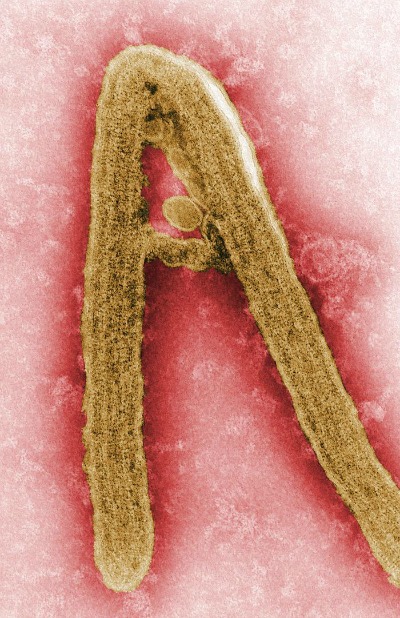NewsDesk @bactiman63
Today, the Centers for Disease Control and Prevention (CDC) issued a Health Alert Network (HAN) Health Advisory to inform clinicians and public health departments in the United States about two confirmed outbreaks of Marburg virus disease (MVD)—one in Equatorial Guinea and one in Tanzania.

Currently, there is no evidence to suggest that these two outbreaks are related; most experts agree that these represent two independent animal-to-human spillover events. To date, no confirmed cases of MVD related to these outbreaks have been reported in the United States or other countries outside Equatorial Guinea and Tanzania.
Recommendations for Clinicians
Currently, the risk of MVD in the United States is low; however, clinicians should be aware of the potential for imported cases. It is important to systematically assess patients for the possibility of viral hemorrhagic fevers (including MVD or Ebola disease) through a triage and evaluation process, including a detailed travel history. Early identification of MVD or other viral hemorrhagic fevers is important for providing appropriate and prompt patient care and preventing the spread of infection. Recent presence in Equatorial Guinea or Tanzania should not be a reason to defer routine laboratory testing or other measures necessary for standard patient care.
MVD should be included as a differential diagnosis for an ill person with history of a concerning exposure while in a MVD affected area (e.g., contact with a symptomatic person with suspected or confirmed MVD or an unknown illness; attending/participating in a funeral; visiting or working in a healthcare facility; having contact with bats or non-human primates; working or spending time in a mine/cave) within 21 days before symptom onset and who have clinical symptoms such as fever, headache, muscle and joint pain, fatigue, loss of appetite, gastrointestinal symptoms, or unexplained bleeding. Alternative diagnoses such as malaria, COVID-19, influenza, or common causes of gastrointestinal and febrile illnesses in a patient with recent international travel should be considered, evaluated, and managed appropriately. Additionally, patients with a Marburg virus infection may present with concurrent infections (e.g., co-infection with malaria) and the possibility of a concurrent infection should be considered if a patient has a clinical and epidemiologic history compatible with MVD.
If a patient is determined to meet criteria for Marburg virus testing, the patient is considered a suspect case of MVD and should be managed under isolation precautions until receiving a negative Marburg virus test result on a sample collected > 72 hours after symptom onset. Routine laboratory testing to monitor the patient’s clinical status and diagnostic testing for other potential causes of the patient’s illness should be pursued while Marburg virus testing is underway. Marburg virus diagnostic testing should not be delayed while awaiting results of other diagnostic testing.
Clinicians with concerns about a patient with suspected MVD should contact their jurisdictional health department immediately (via 24-hour Epi On Call contact list) and follow jurisdictional protocols for patient assessment. If a diagnosis of MVD is considered, jurisdictional officials will work with CDC and the clinical team to coordinate care and testing for the patient and ensure appropriate precautions are taken to help prevent potential spread.
Subscribe to Outbreak News TV on YouTube
Clinicians caring for patients with planned travel to an MVD outbreak affected area can counsel their patients on ways to prevent exposure during their travel. This includes avoiding contact with blood and body fluids (or materials possibly contaminated with blood and body fluids) of people who are sick; funeral or burial practices that involve touching the body of someone who died from suspected or confirmed MVD; or contact with fruit bats and nonhuman primates and areas known to be inhabited by fruit bats (such as mines or caves).
Recommendations for Public Health Departments
If a patient with concerning clinical and epidemiologic history for MVD is identified in the United States, public health departments should follow their established jurisdictional protocols regarding patient assessment to determine if testing for Marburg virus is warranted. Patient management, sample referral, and Marburg virus testing should be coordinated by the jurisdictional health officials, CDC, and the clinical team. CDC’s Viral Special Pathogens Branch (VSPB) is available 24/7 for consultations about Marburg virus disease or other viral hemorrhagic fevers by calling the CDC Emergency Operations Center at 770-488-7100 and requesting VSPB’s on-call epidemiologist or by e-mailing [email protected].
Marburg virus disease is a rare but highly fatal viral hemorrhagic fever caused by two zoonotic viruses, Marburg virus and Ravn virus, that are closely related to ebolaviruses within family Filoviridae. In February and March 2023, two distinct outbreaks of Marburg virus were reported in Equatorial Guinea and Tanzania. These outbreaks mark the first time that Marburg virus has been identified in either Equatorial Guinea or Tanzania, though the virus has been identified previously in neighboring countries and the reservoir, the Egyptian fruit bat, is known to be present in both countries. Available information suggests that these outbreaks may have originated separately in each country. To date, there is no evidence that these two outbreaks are epidemiologically linked. Viral genetic sequencing from Tanzania is in process; these results, along with sequence data available from Equatorial Guinea, will further inform whether the outbreaks emerged separately through distinct animal-to-human spillover events.
- Bolivia reports 2 yellow fever cases in Santa Cruz and Beni
- Philippines report 20 diphtheria cases to date, 567% increase compared to 2022
- Canada: Dog tests positive for avian influenza in Ontario
- Murray Valley Encephalitis causes death of Western Australia child
- Vietnam: Chickenpox cases up more than 7,000% in Hanoi
- Armenia measles update: 35 additional cases reported
- Panama: 5 cases of hantavirus reported in Los Santos during the first quarter of 2023

